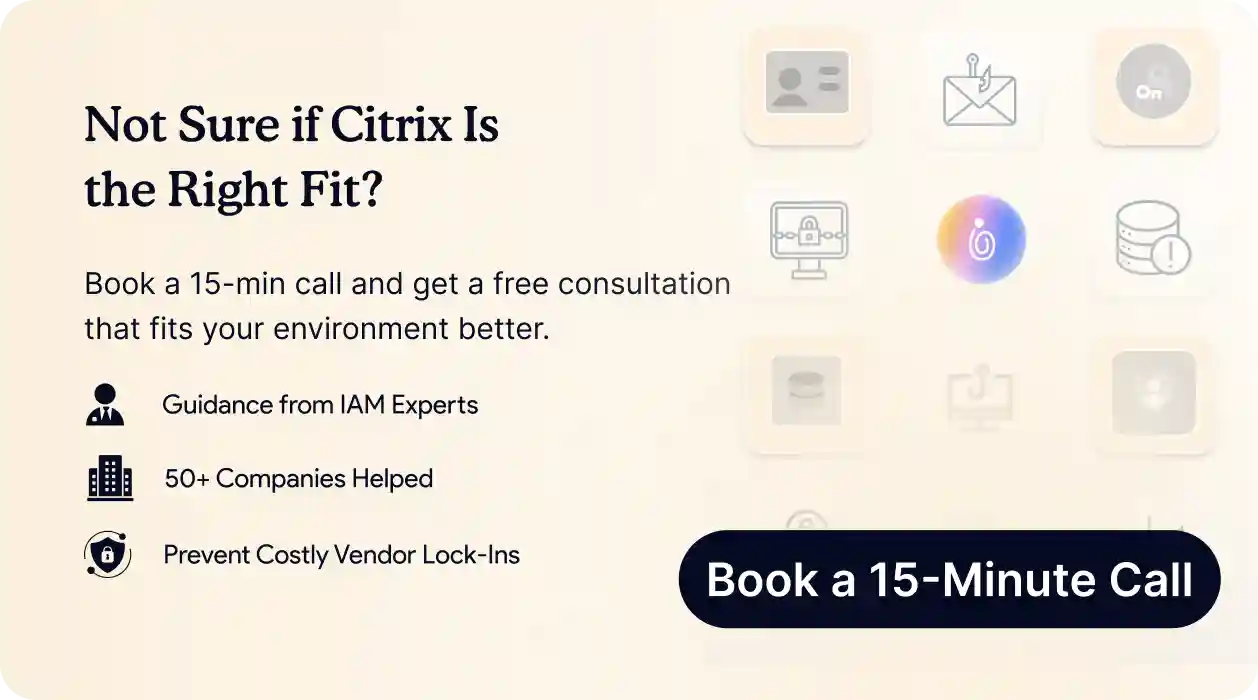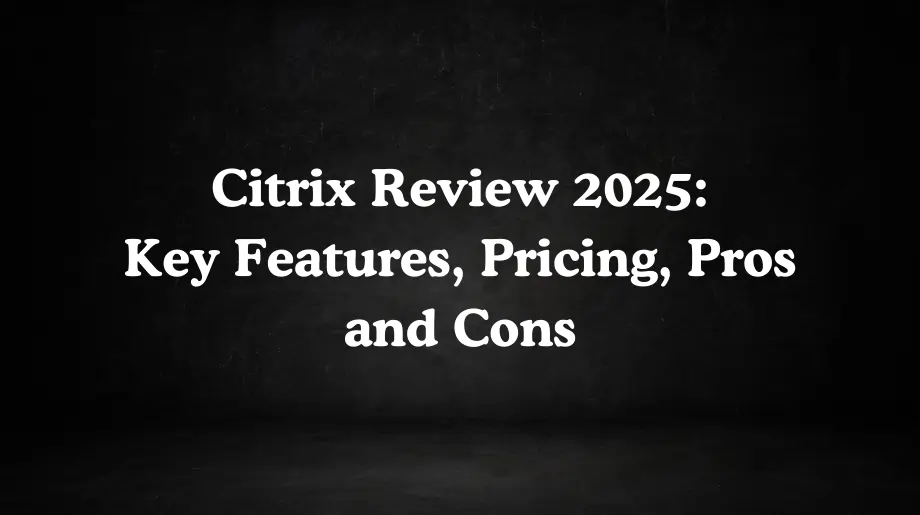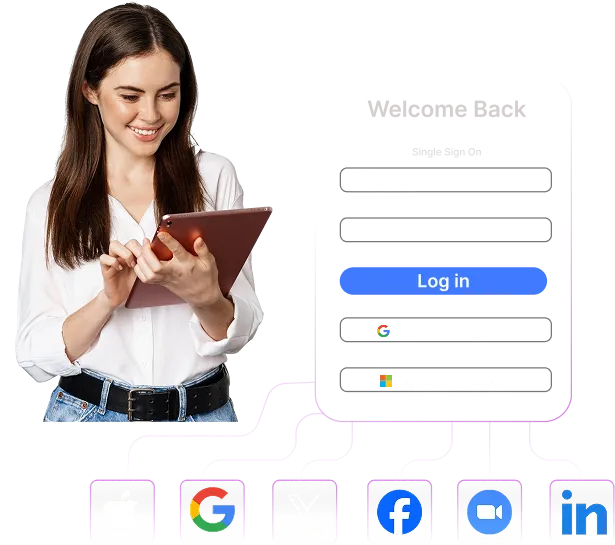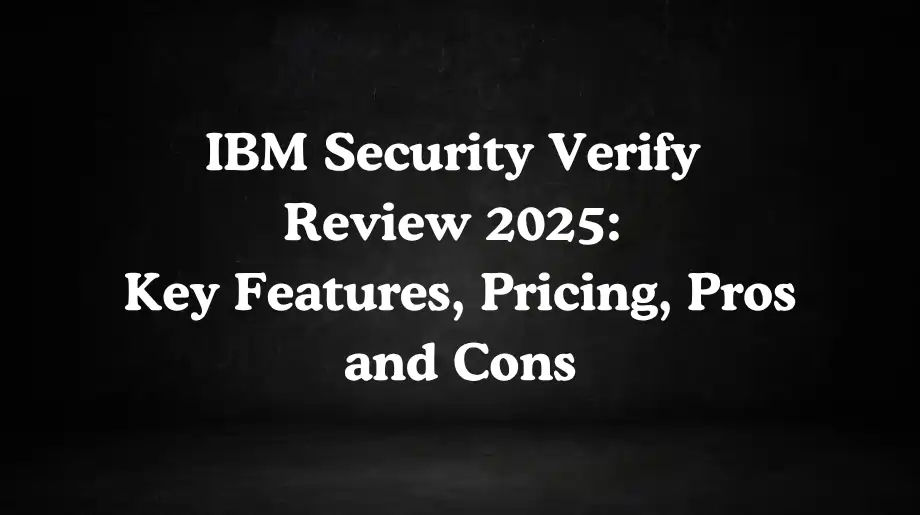
For over 30 years, Citrix has been a basic part of enterprise IT. During this time, it has built a reputation as a mature, powerful, and security-minded leader.
What is Citrix?
Citrix is a leader in the digital workspace market. It specializes in giving secure and flexible access to applications and data. The Citrix platform sopports safe and flexible work. It does this with a unified and reliable system.
This system allows employees to access their company resources from any device. They can do this over any network. All of this happens without risking security.
This main purpose that drives key modern business strategies. These include remote and hybrid work models. This technology separates applications and desktops from a user's device. Then, it runs them securely in a central data center or cloud. Finally, only the screen display is sent over the network to the user.
Key Features of Citrix
The Citrix platform is a large ecosystem of products. These products are carefully designed to deliver, manage, and secure the digital workspace.
Some of the most important functions are broken down below:
- Virtual Apps and Desktops (CVAD & DaaS): This is the center of the portfolio. It has the main function of virtualizing and delivering Windows and Linux applications. These can be sent to end-users on any device. DaaS has a Citrix-managed cloud control plane. In contrast, CVAD is fully managed by the customer.
- Citrix Gateway: This part acts as a secure remote access portal. In this role, it gives a single, secure entry point for external users. It also acts as a strong replacement for traditional VPNs. It does this by applying context-aware authentication policies.
- NetScaler (ADC): This is a powerful Application Delivery Controller. It intelligently manages traffic going to application servers. Its key functions are made up of advanced load balancing.
- Citrix Endpoint Management: This solution was formerly XenMobile. It gives Mobile Device Management (MDM). It also gives Mobile Application Management (MAM). These are used to apply security policies.
- Citrix Content Collaboration: This was formerly known as ShareFile. It is an enterprise-grade solution for secure file syncing and sharing. It works as a more secure alternative to consumer cloud storage services.
- Citrix Hypervisor: This is the company’s own server virtualization platform. It was formerly known as XenServer. It is optimized for running Citrix workloads. It is often part of licensing bundles as a low-cost platform for VDI.
- App Protection: This is a key security feature. When it is turned on, it actively blocks keylogging malware from capturing keystrokes. It also prevents screen-scraping tools from taking screenshots of sensitive information.
Citrix Pricing
Figuring out the financial side of a Citrix setup is a complex job. It goes well beyond the initial price of a license. In October 2022, the company switched to a subscription-only model. It no longer sells perpetual licenses.
- The main licensing models are Per User/Device or Concurrent. In the first model, a license is given to a specific user or device. In the second, licenses are taken from a shared pool. They are only used when a person is active. Concurrent licenses cost much more per unit.
- Sample annual prices from public resellers put DaaS Advanced Plus at about $222 per user/device. The concurrent user option is about $528. The customer-managed CVAD Premium costs about $498 per concurrent user. These prices can grow into very large contracts. Reports show that median annual deals are around $60,000.
- It is very important to remember that the Total Cost of Ownership (TCO) is much higher than the license cost. The full cost must include hardware, staff costs for skilled Citrix administrators, separate Microsoft licensing, and contracts for support.

Citrix Usability and Interface
User reviews and analyst reports point to a big gap in the setup process. This is where the platform's stated potential often differs from the real-world user experience. The Citrix Workspace app gives a unified portal for users.
- The initial setup is often described as complex and hard. This means a high degree of technical skill is needed for a successful installation. It is also needed for ongoing management. In short, this is not a simple solution you can just turn on.
- A large number of end-users report performance issues. For example, they mention system lag. They also talk about crashes on slow internet connections and frustratingly frequent automatic logouts.
- For administrators, the setup screens for parts like Citrix Gateway have been called unfriendly. In addition, the company's history of renaming products is a source of customer frustration.
- But, once it is set up correctly by a skilled team, the platform is praised. People like its reliability and power. This is particularly true in large, complex company environments. The main challenge comes down to the great difficulty of deploying it correctly to get its full benefits.
Citrix's Key Features
Virtual Apps and Desktops (DaaS & CVAD)
As the main product, Citrix Virtual Apps and Desktops (CVAD) and Citrix DaaS make up the center of the portfolio. They have the primary technology to virtualize and deliver applications and desktops to users anywhere.
- The platform separates applications and desktops from the end-user device. It then runs them in a secure data center or cloud. It only streams the screen display. This method is basic for supporting remote work, BYOD programs, and central IT management. The main difference between the two products is the management model.
- CVAD is the traditional, customer-managed model. Here, the business is responsible for all the systems, which gives them the most control. On the other hand, Citrix DaaS is the modern, hybrid-cloud service.
- With DaaS, Citrix manages the control plane. This greatly simplifies the work for the customer. The customer only needs to deal with their applications and desktop workloads.
The HDX Technology Suite
The High-Definition User Experience (HDX) protocol is a proprietary set of technologies. It makes the remote virtual experience feel responsive and local. It is not just one protocol.
It is a collection of technologies. They intelligently compress, encrypt, and optimize the data stream. This data moves between the data center and the endpoint device.
Different Types of Optimizations Supported in Citrix HDX:
- Adaptive Transport: This technology intelligently uses a UDP-based protocol. It delivers a better, more responsive experience on networks with high lag. It can also smoothly switch back to TCP when total reliability is needed.
- Graphics and Multimedia Optimization: HDX uses Thinwire technology. This intelligently compresses screen updates, which lowers bandwidth use. For demanding 3D applications, it supports GPU acceleration. At the same time, other technologies send the work of processing multimedia like webcam video to the local device. This helps get smooth playback.
- Peripheral and I/O Redirection: HDX has many virtual channels. These channels allow local devices to be used without issue inside the virtual session. These devices include printers and USB drives. This allows users to interact with their own local hardware.
Advanced Security
Citrix has built its security model to match Zero Trust principles. In this model, access is never trusted by default. It must be checked over and over.
For this reason, the platform gives multiple layers of security. These layers look after user authentication, the session, and the data inside it.
Authentication Mechanisms Supported in Citrix:
- Identity Provider (IdP) Connection: The platform connects smoothly with leading modern identity providers. These include Azure Active Directory and Okta. This allows businesses to use the IAM systems they already have.
- Adaptive Authentication: This is one of the platform's most powerful security features. It allows for dynamic access control based on context. Administrators can build fine-grained policies. These policies can grant or restrict access based on a user's role, network location, and the security of their device. This feature combines the jobs of a traditional VPN, MFA provider, and device compliance checker into one policy engine.
- Modern Authentication Support: The platform supports Single Sign-On (SSO). This gets rid of password re-entry for users. It also supports modern standards like SAML 2.0 and FIDO2. These are used for secure, passwordless authentication.
Session and Data Security Features:
- ICA Encryption: All data sent between the user's device and the data center is encrypted. There are options up to AES-256. This protects data from being spied on while it is moving.
- App Protection: For high-security situations, this feature gives a key layer of endpoint security. It actively blocks keyloggers and screen-scraping malware. In turn, this protects company data even if a user's device is compromised.
- Data Isolation and Watermarking: Virtualization keeps data safe in the data center by design. It never stores data on the user's device. To stop data theft using photos, dynamic watermarking can be turned on. This overlays the user's name and a timestamp on the screen.
- Virtual Channel Control: Administrators have fine-grained control to turn off specific HDX functions. For instance, they can block clipboard access or local drive mapping for high-risk users. This helps prevent data from being stolen.

Performance Management
Citrix gives advanced tools to manage performance. These tools help promote a positive user experience, even in environments with many users. Using technology from its WEM product, Citrix can intelligently look after CPU and RAM use on servers.
- This stops one user's runaway computer process from slowing down performance for others. It does this by dynamically changing process priorities. The platform also optimizes the logon process.
- This is often a user's first impression of performance. It makes logon times much faster. It does this by putting off non-essential tasks, such as mapping network drives.
- These tasks are delayed until after the user's desktop is up and interactive. This makes it seem like the day starts much faster.
Citrix Reviews and Ratings
- An analysis of user reviews from many platforms points to a clear and consistent market view. Citrix is seen as a powerful but flawed platform. On Gartner Peer Insights, a site reflecting large company views, Citrix DaaS has a strong 4.3 out of 5 rating. Users there praise it as a reliable and powerful solution. However, these good words are often paired with complaints about high license costs and a very challenging initial setup.
- On TrustRadius, Citrix DaaS gets a very high score of 8.8 out of 10. In their reviews, users praise its strong desktop isolation. They also like its excellent performance on low-bandwidth connections. On the other hand, the negative comments are almost all about the high cost, the complex technical design, and occasional system lag.
- Reviews on G2 capture a wider market feeling and are more mixed. They tend to focus on daily usability. Citrix Gateway, for instance, gets frequent complaints about performance problems. These include lag, a poor user interface, and frustratingly frequent automatic logouts.
- Across all platforms, the praise is consistent for its strong security. Users also value its role in supporting flexible remote work. In contrast, the most frequent criticisms are about its high cost, complex licensing, unstable performance, and difficult setup.
Overall View of Citrix
Citrix correctly holds on to its position as a market leader. It is a powerful, feature-rich, and highly secure platform. It has also proven its value in the world's most demanding company environments for decades.
However, the platform's main challenges are large and lasting hurdles. These include its high TCO. They also include its built-in complexity and the gap between its potential and its real-world performance.
A decision to invest in Citrix is not just a software purchase. It is a long-term commitment to a large and demanding technology ecosystem. For the right company with the right scale, security needs, and technical skill, it is an excellent choice. For the wrong company, it risks becoming a costly and complex problem.
Infisign: The Best Citrix Alternative
For decades, Citrix has been a foundational technology for enterprise remote access, but its reputation is built on a complex and costly virtualization infrastructure.
In terms of a cost-effective way to provide secure access without the immense overhead of virtualization, Infisign presents a compelling alternative.
Infisign’s IAM Suite simplifies the administration of workforce identities, and its UniFed tool is designed to streamline user access, directly addressing the core goal of secure connectivity without the complexity and high Total Cost of Ownership (TCO) associated with Citrix.
With a library of over 6000 APIs and SDKs, Infisign ensures that integrating with your company's entire technology stack is fast and straightforward.
Here’s how Infisign solves key security and access challenges
- Brute Force Protection: You can fortify security against credential theft and brute-force attacks. Infisign applies strong Multi-Factor Authentication (MFA) using a variety of user-friendly methods like OTPs, magic links, and biometrics. This delivers robust security without the configuration complexity of components like Citrix Gateway.
- Transparent and Economical Pricing: While Citrix is known for its high licensing costs, complex TCO, and the need for expensive specialized staff, Infisign’s pricing is transparent and economical. All sophisticated authentication methods are included in the starting cost, eliminating the unforeseen charges and massive infrastructure investment required to run a Citrix environment.
- AI Access Assist: Managing user lifecycles in the complex Citrix ecosystem can be a significant administrative burden. Infisign's AI capabilities automate and accelerate the process of provisioning and de-provisioning users, ensuring that access control across applications like Slack and Microsoft Teams is consistent, immediate, and less prone to manual error.
- Attribute-Based Access Control: You can achieve the principle of least privilege with granular access rights based on specific user and device attributes. Infisign checks dynamic factors like location and device health to ensure users only access the resources they explicitly need. This delivers the zero-trust outcome of Citrix’s context-aware policies without navigating its intricate administrative consoles.
- Conditional Access + Network Access Gateways: As a direct, modern alternative to Citrix Gateway, Infisign's network access gateway provides secure, cloud-managed access to on-premise applications. It allows you to apply modern zero-trust and conditional access policies to your legacy systems without the cost and complexity of a traditional virtual desktop infrastructure (VDI).
Want a reliable alternative to Citrix? Reach out for a free demo call with our team of security experts.

FAQs about Citrix
What is Citrix used for?
Citrix's main use is to give a unified, secure, and reliable system. This system allows employees to get into their company applications and desktops. They can do this from any device and over any network. This is all done without risking security. This also supports key business goals like remote work, BYOD programs, and secure access for outside contractors.
Who uses Citrix?
The ideal customer for Citrix is a large company. This is especially true for those in the Fortune 1000 or in regulated fields like finance, healthcare, and government. These businesses usually have high security needs. They also have a large IT budget and a clear hybrid or multi-cloud strategy. They also need a dedicated, skilled IT team that can handle the platform's complexity. In general, it is a poor fit for small to medium-sized businesses. This is because they often have limited IT staff or budgets.
Is Citrix expensive?
Yes, Citrix is generally seen as one of the most expensive solutions in its field. The high Total Cost of Ownership (TCO) is a frequent criticism. This cost goes far beyond the software license fees. The full cost must include large hardware costs. It also includes required Microsoft licensing. Finally, it includes the large, ongoing cost of specialized staff. These people are needed to set up and look after the complex platform. Market data shows that median annual contract values are about $60,000.

























